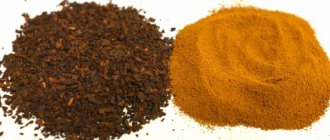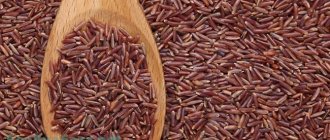Diabetes mellitus is a common and quite dangerous disease. According to published research by the World Health Association, every sixth person around the globe is faced with this disease, and in developed countries this percentage is twice as high and the number of cases is constantly increasing.
Among the main reasons provoking the development of the disease, the leading place is occupied by poor-quality and unhealthy nutrition, and the abuse of bad habits, overloads of the body of various kinds, associated with an intense rhythm of life, further enhance the negative impact of a poor diet. If you pay attention to the food that we eat every day, you can easily notice that it is rich in quickly digestible carbohydrates and animal fats.
In the treatment and prevention of diabetes, a significant role is played by following a diet with one indispensable condition - the food should not contain a lot of sugars. Therefore, it is important for people suffering from this disease to know that eating cottage cheese does not aggravate diabetes and is recommended for consumption due to its low lipid and carbohydrate content.
The product is a valuable source of protein, various enzymes, vitamins and beneficial lactic acid bacteria. Therefore, the article will talk about what effect a sick person will have if he uses this product.
Fermented milk products are good for diabetics
General information
Cottage cheese is produced by fermenting milk, during which the proteins coagulate and whey is separated. The product acquires a dense consistency and is saturated with useful components. It contains up to 22% proteins and a large amount of fats.
Glycemic index
The glycemic index reflects the rate of absorption of carbohydrates and the increase in the amount of glucose in the blood. For cottage cheese, its value is set within 28-33 units, depending on the fat content. This means that when consuming a lactic acid fermentation product, there is no sharp increase in the concentration of sugar in the blood plasma.
Insulin index
The insulin index reflects the rate of increase in insulin concentration in the blood in response to food intake. For cottage cheese, its value is 120 units, which indicates the production of a large amount of pancreatic hormone after consuming the product.
Benefit
Consumption of fermented dairy products is associated with a reduced risk of developing metabolic syndrome, cardiovascular pathologies and insulin resistance.
The benefits of cottage cheese for human health.
This benefit is mainly due to the work of microorganisms that destroy carbohydrate molecules, releasing organic acids, alcohols and gases.
Some of these compounds, in combination with vitamin and mineral complexes, have beneficial effects on human health.
Eating cottage cheese is associated with several beneficial effects:
- activation of metabolism;
- strengthening the immune system;
- reducing blood cholesterol levels;
- strengthening the structure of bones and teeth;
- increased insulin secretion;
- reduction of excess weight.
Foods that normalize sugar in type 2 diabetes
Heat treatment significantly increases the glycemic index of many foods, so nutritionists recommend consuming as many raw vegetables as possible. This will help improve glucose absorption and pancreatic function.
Products recommended for type 2 diabetes:
| Fruits | Limited: cherries, peaches, currants, apricots, apples, gooseberries, cherry plums, oranges |
| Cereals | Soybeans, buckwheat, lentils, |
| Vegetables | Cucumbers, zucchini, broccoli, beans, peas, red peppers, cauliflower |
| Pasta | From durum wheat |
| Meat fish | Chicken (fillet), turkey, rabbit, beef, veal (lean), fish (mostly white species) |
| Dairy | Cottage cheese no more than 2% fat, milk and kefir up to 1.5% fat |
| Bakery products | Whole grain bread, products made from peeled flour |
| Vegetable oils | Olive, flaxseed, rapeseed |
| Drink | Tea and coffee (unsweetened), dried fruit compotes, herbal infusions. |
It is also allowed to consume special diabetic products that contain sugar substitutes (crisps, bars, etc.)
How to properly consume cottage cheese for diabetics
The following rules must be adhered to:
- choose a product with medium fat content;
- combine with dried fruits, vegetables and herbs;
- use natural sweeteners to improve taste;
- alternate consumption of cottage cheese, cheese and milk.
Daily norm
The daily portion is limited by the absorption standards of phosphorus and calcium, which are present in abundance in the product.
To avoid side effects due to an excess of these microelements, you should eat no more than 250 g of cottage cheese per day. The optimal daily intake is 150 g.
Meal schedule
Many people are advised to adhere to a certain diet, eating food at approximately the same time every day. But a more flexible approach to nutrition is also acceptable, depending on the type of diabetes and the medications prescribed to control it. It is important to receive a certain, approximately equal amount of carbohydrate components with each meal. The only thing you can’t do if you have diabetes is fasting for a long time, especially while taking medications or insulin. This threatens the development of hypoglycemia, even coma.
Correctly determined portion sizes are also important to control blood sugar and your weight. You need to discuss the nuances of nutrition with your doctor, use useful smartphone applications that help create a diet for diabetics.
Healthy recipes
Dairy products occupy a leading position in the diet of diabetics. You can prepare many healthy and tasty dishes from it.
DIY cottage cheese
You can make the product yourself.
Unlike store-bought ones, it will not contain potentially dangerous food additives. Products for cooking:
- whole milk - 3.7 l;
- white vinegar - 150 ml;
- salt - 5 g.
Milk is poured into a saucepan with a thick bottom and heated to +88°C with regular stirring. Then gradually add vinegar, cover with a lid and leave the mixture for 30 minutes. The finished composition is filtered with gauze, after which the solid substrate is tightly wrapped in cloth and doused with cold water. The cottage cheese is kneaded until completely cooled and salt is added. The product is kept for an hour, mixed and served. It should be stored in the refrigerator for no more than 5 days.
Recipe for making cottage cheese at home.
Casserole
The high concentration of fats in the dish helps control carbohydrate metabolism, and the use of certain spices helps activate the secretory function of the pancreas.
The following ingredients will be required:
- cottage cheese - 200 g;
- sour cream - 50 g;
- chicken egg - 1 pc.;
- semolina - 20 g;
- fructose - 10 g;
- butter - 30 g;
- cinnamon - to taste.
Cottage cheese is mixed with semolina, egg, fructose and cinnamon until a homogeneous mass is formed. The mixture is placed in a fireproof form greased with butter. A layer of sour cream is applied on top of the curd mixture. The dish is baked at +190°C for 40 minutes.
Curd rolls
Baking becomes healthier by adding fermented milk products and replacing sugar with natural sweeteners.
Curd rolls are delicious and healthy baked goods.
The recipe includes the following products:
- cottage cheese - 200 g;
- wheat flour - 200 g;
- chicken egg - 1 pc.;
- butter - 200 g;
- sweetener - 120 g;
- soda - 2 g;
- marmalade - 200 g.
Flour is combined with soda and sugar and added to the curd mass.
Then add the pureed butter and a lightly beaten egg. The dough is thoroughly kneaded and put in the refrigerator for 30 minutes. The finished mass is rolled out into a layer 3-4 mm thick and cut into rectangles. Each piece is rolled into a tube, first placing a small amount of marmalade on its surface. The dish is baked at +180°C for 20 minutes.
Syrniki
Traditional cheesecakes contain wheat flour with a high glycemic index.
The diabetic version of the dish involves the use of ground oat grains enriched with pectins. You need to prepare:
- cottage cheese - 500 g;
- oat flour - 120 g;
- chicken egg - 1 pc.;
- sugar - 50 g;
- salt - 1 pinch.
You can diversify the menu with curd cheesecakes.
The cottage cheese is ground with sugar, then the egg, flour and salt are introduced successively. Small cheesecakes are formed from the resulting dough, breaded in remaining flour and fried over medium heat on both sides until golden brown. The dish is served with sour cream.
Curd pancakes
Pancakes contain a small amount of simple carbohydrates, the presence of which can be compensated by adding whole grain flour.
To prepare pancakes you will need:
- cottage cheese - 250 g;
- milk - 400 ml;
- chicken egg - 2 pcs.;
- wheat flour - 250 g;
- sugar - 20 g;
- baking powder - 5 g;
- salt - 1 pinch;
- vegetable oil for frying.
Beat the eggs with sugar and salt until a fluffy, foamy mass is formed. The composition includes cottage cheese and flour, pre-mixed with baking powder. Continuously whisking the mixture with a mixer, pour in the milk in several additions. When the mixture reaches a semi-liquid consistency, begin preparing pancakes. The dish is served hot with fresh berries, jam or sour cream.
Curd pancakes made with milk are not only tasty, but also filling.
Diabetic soufflé
Gelatin, which is the main component of curd soufflé, consists of pectin fibers.
These compounds slow the absorption of monosaccharides, helping regulate blood glucose levels. You need to prepare the following products:
- cottage cheese - 400 g;
- milk - 100 ml;
- gelatin - 15 g;
- dried fruits - 50 g;
- sweetener - to taste.
Gelatin is dissolved in a small amount of warm water and left for a few minutes. Meanwhile, the cottage cheese and milk are whipped until a semi-liquid homogeneous mass is formed. Sweetener and chopped dried fruits are added to the mixture. Then the swollen gelatin is introduced. The resulting composition is poured into molds and placed in the refrigerator until completely solidified.
Ice cream
Flavored ice cream with a high protein content and a minimum amount of simple carbohydrates is a good dessert in the diet of diabetics.
Cottage cheese ice cream is a light and refreshing dessert.
For preparation you will need:
- cottage cheese - 200 g;
- condensed milk - 200 g;
- whole milk - 500 ml.
Beat cottage cheese and condensed milk in a blender until smooth. Then add milk and mix again. The curd mass is poured into molds and placed in the refrigerator until completely hardened.
Quick salad
Curd salad with fresh vegetables has strong antidiabetic properties. Healthy fiber combined with milk proteins helps maintain low glucose levels.
To prepare the salad you need the following products:
- cottage cheese - 300 g;
- sour cream - 50 g;
- cucumber - 90 g;
- sweet pepper - 50 g;
- green onion - 10 g;
- parsley - 5 g;
- natural sweetener - to taste;
- salt - to taste.
The cottage cheese is rubbed through a fine sieve, then mixed with chopped vegetables and herbs. Sweetener and salt to taste are added to the mixture. At the last stage, add low-fat sour cream. Salad is served for breakfast as a separate dish.
Sandwich mass
Curd mass in combination with dietary fiber from wheat or rye bread has a beneficial effect on digestion.
Ingredients for cooking:
- curd mass - 200 g;
- sour cream - 20 g;
- milk - 30 ml;
- green onion - 10 g;
- salt - to taste.
The curd mass is mixed with milk and sour cream using a blender. Add chopped herbs and salt to the mixture. The finished mass is used to prepare traditional or baked sandwiches.
Other recipes
The simplest and most common cottage cheese dishes include:
- Lazy dumplings. Combine 200 g of fermented milk product, a chicken egg and 7-8 tablespoons of flour. Knead the soft dough and make small flattened ovals out of it. The preparations are boiled in boiling salted water for 5 minutes.
- Stuffed apples. Sweet fresh fruits are cut in half, cored and stuffed with a curd-apple mixture. The dish is baked at +170°C for 20 minutes.
- Millet porridge with curd mass. The cereal is boiled until tender, then salted and a small amount of raisins is added. At the last stage, the curd product is added.
Harm and contraindications
Excessive consumption of the product may be accompanied by adverse consequences:
- general intoxication of the body;
- disruption of the excretory organs: kidneys and liver.
Cottage cheese should not be eaten by people with lactose intolerance, because their body does not produce enough of the enzyme lactase, which hydrolyzes milk disaccharides.
Diseases for which cottage cheese is contraindicated.
Selection rules
If you have a diabetic type of disease, then it is recommended to choose the right product. Patients are advised to buy only fresh product that has not been previously frozen. There are a large number of varieties of the product in stores. In order to ensure benefits for the body, it is recommended to give preference to low-fat cottage cheese. After purchasing the product, it must be stored for at least 3 days. This cottage cheese is allowed to be consumed during the gestational period.
Product selection











